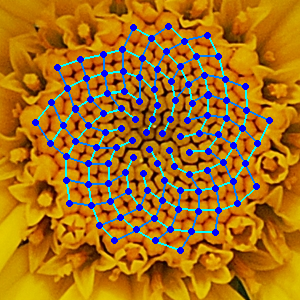by the way there are ones to whom I don't answer --- in general.
This time I raped myself.
subgenius wrote:ironically "math" does not occur in nature....it is entirely man made...in other words, 1+1=2 does not exist in nature, completely man-made....equals 2 because we said so....we can actually change the rules so that 1+1=3.275
jus sayin
awkward
Ironically (uppercase letter at the beginning of a sentence...), you don't know nature and/or math (math without quotation marks)
-
Exponential function (The exponential function is widely used in physics, chemistry, engineering, mathematical biology, economics and mathematics. --- all are descriptions of nature)
-
Golden ratio (The golden ratio is also called the golden section - Latin: sectio aurea - or golden mean. Other names include extreme and mean ratio, medial section,
divine proportion, divine section - Latin: sectio divina ; The golden ratio has also been
used to analyze the proportions of natural objects as well as man-made systems such as financial markets)
-
Fibonacci number (Applications include computer algorithms
such as the Fibonacci search technique and the Fibonacci heap data structure, and graphs called Fibonacci cubes used for interconnecting parallel and distributed systems. They also appear
in biological settings, such as branching in trees, phyllotaxis (the arrangement of leaves on a stem), the fruit sprouts of a pineapple, the flowering of artichoke, an uncurling fern and the arrangement of a pine cone.)
My pet example:
Fibonacci considers the growth of an idealized (biologically unrealistic) rabbit population, assuming that: a newly born pair of rabbits, one male, one female, are put in a field; rabbits are able to mate at the age of one month so that at the end of its second month a female can produce another pair of rabbits; rabbits never die and a mating pair always produces one new pair (one male, one female) every month from the second month on. The puzzle that Fibonacci posed was: how many pairs will there be in one year?
At the end of the first month, they mate, but there is still only 1 pair.
At the end of the second month the female produces a new pair, so now there are 2 pairs of rabbits in the field.
At the end of the third month, the original female produces a second pair, making 3 pairs in all in the field.
At the end of the fourth month, the original female has produced yet another new pair, the female born two months ago produces her first pair also, making 5 pairs.
At the end of the nth month, the number of pairs of rabbits is equal to the number of new pairs (which is the number of pairs in month n − 2) plus the number of pairs alive last month (n − 1). This is the nth Fibonacci number.The other math examples on that site are apparently chinese for you...

Yellow Chamomile head showing the arrangement in 21 (blue) and 13 (aqua) spirals. Such arrangements involving consecutive Fibonacci numbers appear in a wide variety of plants.
And --- last but not least --- something Hungarian...

Fibonacci intervals (counting in semitones) in Bartók's Sonata for Two Pianos and Percussion, 3rd mov. (1937)
- Whenever a poet or preacher, chief or wizard spouts gibberish, the human race spends centuries deciphering the message. - Umberto Eco
- To assert that the earth revolves around the sun is as erroneous as to claim that Jesus was not born of a virgin. - Cardinal Bellarmine at the trial of Galilei

 .
. 





